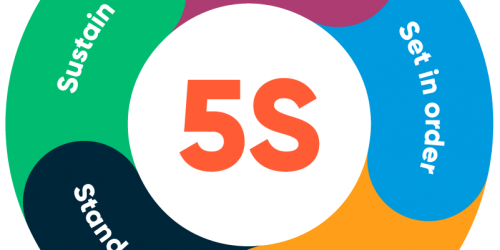How will flexible working impact companies in the future?
Although flexible working has recently become a necessity, in reality, lots of organisations have already been considering the best way to combine flexibility and productivity by balancing employees aspirations with the expectation to achieve targets.
Flexible working: A resounding endorsement from employees
Although alternatives to working in the office had to be introduced as a matter of urgency, these changes were already being requested by the vast majority of employees, who have long been calling for more flexibility in the workplace. According to a survey carried out in November 2020 by Avaya, in partnership with the data analysis company Davies Hickman Partners, 83% of employees feel that they do not need to be in the office to be productive.
Moreover, 78% of EU workers are in favour of hybrid working, alternating between home and face-to-face work, according to a survey by Eurofound published in September 2020. The trend towards semi-nomadic working seems to be well and truly underway.
Recent experience has shown that a new ‘hybrid’ approach can be applied to most jobs. Employees would challenge a decision to return to a more rigid working environment when evidence has shown that certain tasks or assignments can now be carried out remotely with the same efficiency and no longer necessarily warrant travelling.
Flexible working under the microscope
New working methods will emphasise the hybridisation and constant adaptability of workspaces. Needless to say, they will primarily respond to an economic rationale of cost reduction, but they will also offer a new approach to work that is paradoxically more collaborative than the traditional face-to-face working environment. Different forms of work have emerged in recent years and will set the pace for corporate life in the years to come.
Home or remote working
This is a nomadic way of working in which employees carry out their tasks from home or any other location as long as they have access to the necessary technologies (internet connection, email, work software, shared documents, etc.). The requirements for remote working are defined by the employer and vary from company to company (number of days, schedule, meetings with the manager, etc.).
Flexible workspace
In many working environments employees no longer have a fixed or assigned workspace ‘hot-desking or ‘flexible workspaces’ are becoming increasingly popular. In the future, the flexible workspace will redefine workspaces as multipurpose collaborative hubs for meetings, creativity, or concentration, depending on the needs of employees. The flexible workspace will therefore make fixed offices and open-plan workspaces obsolete.
Co-working
Co-working is a shared working arrangement in which offices are decentralised and located in premises close to where the employees live. A company rents shared workspaces or a floor in a building shared with other businesses.
Work cultures that meet the expectations of employees
As well as garnering considerable support among employees, a more flexible approach will also enable companies to broaden their appeal and rethink their management methods.
Flexibility and agility
The shift to more flexible working (co-working spaces, flexible workspace, remote working, digital nomads, freelancing, intrapreneurship, etc.) is becoming a key consideration when looking for employment.
Flexibility at work will become a determining factor in the next few years, especially for the younger generations who no longer view work solely in terms of salary. These new employees will be more “opportunistic” in their career choices. The concept of loyalty towards the company will be much less pronounced than for their predecessors, with an aspiration to change jobs more frequently (22 times on average in their lifetime compared to 11.7 times for previous generations).
Working conditions will become just as important as the salary or the actual job description. Companies will be forced to adapt if they want to attract the best talent, who will choose the job that offers them the most freedom and autonomy for the same pay.
The need for autonomy
Beyond the appeal that flexible working brings to the company, these new practices also pose issues in terms of productivity. An employee who enjoys what they perceive to be good working conditions will be much more motivated and productive daily. The average employee wants more freedom and independence. Inflexible schedules and top-down hierarchies seem to have had their day. The future of work is now about agility and collaboration.
These new demands reflect the desire to be judged on output and concrete criteria rather than on attendance, punctuality, or a sense of belonging to the company. This freedom goes hand in hand with greater accountability and the achievement of set objectives. A new relationship, based on trust rather than control, will thus continue to develop in the years to come.
Quality of life at work
Mobile working to various degrees will make life easier for employees in many ways. It will give them greater flexibility to manage their time and schedule as they see fit, according to their circumstances.
The continuation of remote working will simplify the lives of employees, freeing them from the constraints of travel time, traffic jams, and peak periods. It will also allow them to better organise their childcare arrangements, for example.
Moreover, being at work 2 or 3 days out of 5 is already viewed very positively by employees, who are happy to meet up with their colleagues and break the isolation, whereas the obligation to go to the office 5 days a week could be seen as a repetitive and monotonous burden. In the future, the opportunity to alternate between days of on-site and remote working will continue to provide a balance on many levels for quality of life in companies.
Risks associated with remote working
While remote working does have advantages for both employees and companies, they are not without risk and will need to be implemented in a coordinated way.
Work/life balance
The main risk will be the blurring of personal and professional life… Even though there is a strong demand for a more hybrid business model, employees may find themselves “trapped” in this work pattern, unable to truly disconnect from work.
This lack of work-life balance is a concern for some employees whose companies are planning to move to remote working. They are worried that working hours will end up getting longer. There will also be the issue of isolation and loss of contact with the outside world, which may affect their performance.
Is the company culture under threat?
There is a fine line between independence and individualism, and increased time away from the office environment could pose a risk to team cohesion. Employees themselves are well aware of the risk of losing informal interaction.
Managers will therefore have to find even more imaginative ways of maintaining a shared company culture through team meetings, sometimes in a more relaxed or fun way (workshops, seminars, extra-professional events, etc.).
A delicate balance
While remote working is becoming more and more widespread, it should not be introduced just as a fad. It should be implemented to address a genuine issue and the specific circumstances of the company. Certain sectors or types of professions will lend themselves to it more than others. It will also be necessary to maintain a balance between remote and on-site work.
Remote work should therefore not become the rule, but remain an adjustment variable that will allow flexibility to be introduced into the organisation. Maintaining the corporate culture and cohesion will be crucial, otherwise, a kind of dispersal or even anarchy will ensue. Regular working deadlines, progress reviews, and weekly or even daily meetings will be effective ways to maintain this contact and optimise team performance.
To a lesser extent, the loss of control by managers over their employees or the demotivation of staff may also be obstacles to the sustainability of hybrid forms of work. These fears, which have long been present in the collective imagination, have, however, been largely dispelled by experience. It has been found that efficiency levels are often higher than in conventional forms of work (better concentration, empowerment, time savings in transport, etc.).
Managing change
These changes should be considered within the framework of a change management process designed for and in collaboration with employees. They should be the subject of prior communication, personalised support, and training in the various technical equipment, digital tools, and software for mobile working, remote document sharing, and collaborative working.
In conclusion, the working methods of the future will be more people-oriented than workplace-oriented. The idea will be to provide employees with a flexible framework within which they can flourish and work in a smart, non-standard way. Trust and flexibility will be the keywords of this new culture, which can be summed up by the phrase “smart working”, where work will become adaptable and agile.
For more information please visit us: www.manutan.co.uk/future-of-work







